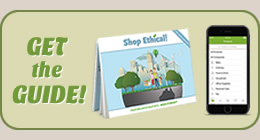 Food Miles are a measure of the distance food is transported between production and consumption. The more miles the more greenhouse gases produced. A typical Melbourne shopping basket has travelled a staggering 70,000 kilometres – equivalent to almost two trips around the world. By purchasing an orange grown in Mildura rather than California you reduce food miles from 12,879 km to 567 km.
Food Miles are a measure of the distance food is transported between production and consumption. The more miles the more greenhouse gases produced. A typical Melbourne shopping basket has travelled a staggering 70,000 kilometres – equivalent to almost two trips around the world. By purchasing an orange grown in Mildura rather than California you reduce food miles from 12,879 km to 567 km.
See CERES Food Miles in Australia report.
Country of Origin labelling in Australia
Though inadequate, Country of origin labels are often the only indicators as to where ingredients are from. Here’s a summary:
- ’Product of Australia‘ means each significant ingredient must come from Australia, and all or almost all of the processing must happen here too.
- ‘Made in Australia‘ means The product has been substantially transformed in Australia and at least 50% of the production costs have been incurred in Australia. (So a meat pie can be labeled “made in”Australia’ and yet have ingredients -meat- from elsewhere).
- ‘Made in Australia from local and imported ingredients‘. Whichever comes first, local or imported, is in the greatest proportion.
Country of Origin labelling is compulsory for all processed foods, and outlined in the Food Standards Code and Trade Practices Act. This is consistent with other countries labelling. (ie. generally a similar code with similar labels exist for other countries). See more at Choice article (from May 2011), Choice recommendations for improvements to Country of Origin labelling (from Sept 2012), and updated article ‘Country of origin a source of confusion’ (Jan 2013). See the Greens proposed bill for improving Country of Origin labelling (July 2012) .
Actions:
- In the supermarket choose items labelled ‘Product of Australia’ as your first preference. Second preference ‘Made in Australia’ and choose imported items as last preference.
- Better still, Buy Local. Purchase from local independent co-ops and grocers rather than the big supermarket chains. In the market, ask your local grocer, where the produce comes from.
- Check out Local Harvest – our new resource for finding good food close to you! Including food box systems supporting local farmers directly.
- Eat and buy in season. By eating seasonally you get the most flavour and nutritional value and it is usually the most affordable.
- Visit Farmers’ markets – where you can talk to the farmer directly.
- Order Australian-made grocery items online at Only Oz . Check out Dick Smith Foods – made in Australia by Australian owned companies. Have 100% Australian owned, grown and produced food delivered directly to your door at Aussie Farmers Direct. For other Australian-made products see Buy Australian Made .



